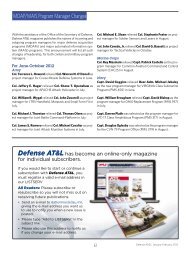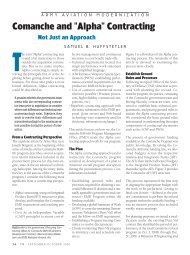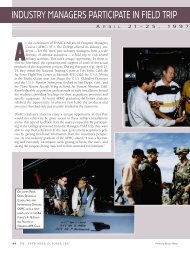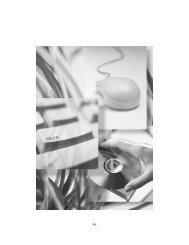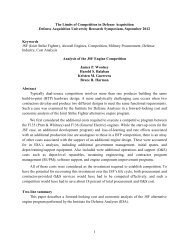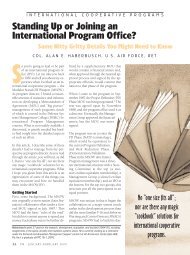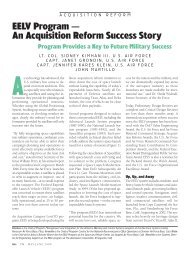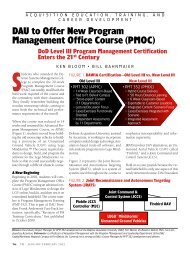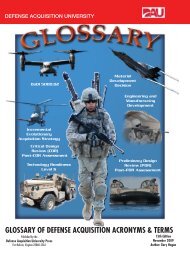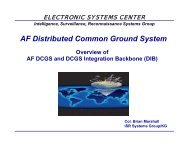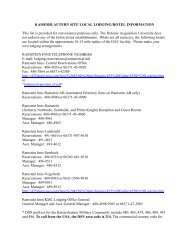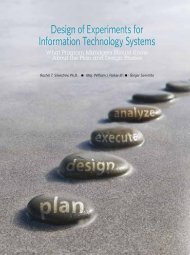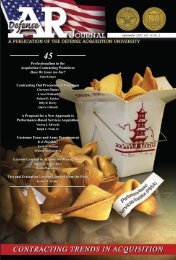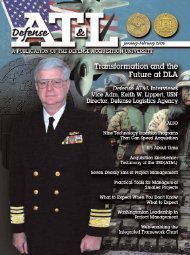Defense ARJ - Defense Acquisition University
Defense ARJ - Defense Acquisition University
Defense ARJ - Defense Acquisition University
Create successful ePaper yourself
Turn your PDF publications into a flip-book with our unique Google optimized e-Paper software.
<strong>Defense</strong> <strong>Acquisition</strong> Review Journal<br />
creative potential and practiced creativity that represents untapped creative resources.<br />
Our results also suggest that this gap is much more pronounced among line employees<br />
and that line employees generally perceive less organizational support for using<br />
their creative resources than supervisors. To address this situation, an organizational<br />
intervention designed to increase self-leadership capabilities at all levels and to<br />
increase perceptions of organization support for creative practices among line employees<br />
in defense acquisition would be well advised. More specifically, a structured<br />
self-leadership training program similar to those reported elsewhere in the literature<br />
(e.g., Neck & Manz, 1996; Stewart, Carson, & Cardy, 1996) could be conducted for<br />
defense acquisition employees. Such a training program could have the dual effect<br />
of increasing self-leading behaviors and thus creative potential while also strongly<br />
signaling organizational support for creative behaviors.<br />
Although our findings suggest exciting avenues toward increasing self-leadership<br />
and unleashing creative resources at all organizational levels, our study is bound by<br />
certain limitations. First, the present sample was relatively homogeneous, consisting<br />
entirely of members of the ACA. As we have suggested, such a sample is especially<br />
appropriate for creativity research because the DoD has taken a keen interest in<br />
tapping all creative resources available in order to sustain a competitive advantage.<br />
However, whether the results reported here would generalize to other samples of<br />
interest remains uncertain. Second, all items were self-reported and collected using<br />
a single survey at a single point in time, thus raising concerns regarding measurement<br />
issues such as response set and social desirability biases. Given this potential<br />
problem, our findings should be viewed with some degree of caution. On the other<br />
hand, despite such inherent limitations, the use of self-reported items collected in a<br />
single administration is common practice in many aspects of social science research.<br />
Finally, it is impossible to determine, based on these data and statistical techniques<br />
alone, the direction of causality for the observed relationships. Direction of causality<br />
must be inferred by underlying theory. Although we have advanced empirical and<br />
theoretical arguments supporting the possible direction of causality for the various<br />
relationships reported here, these arguments cannot be unequivocally substantiated on<br />
the sole basis of statistical test results.<br />
Future research should continue to examine the relationships between self-leadership,<br />
creative potential, practiced creativity, organizational level and organizational<br />
support for creativity. Specifically, future research should more closely examine the<br />
106<br />
Employees who feel that the organization supports their<br />
creative efforts will be much more likely to practice<br />
creative behaviors.



